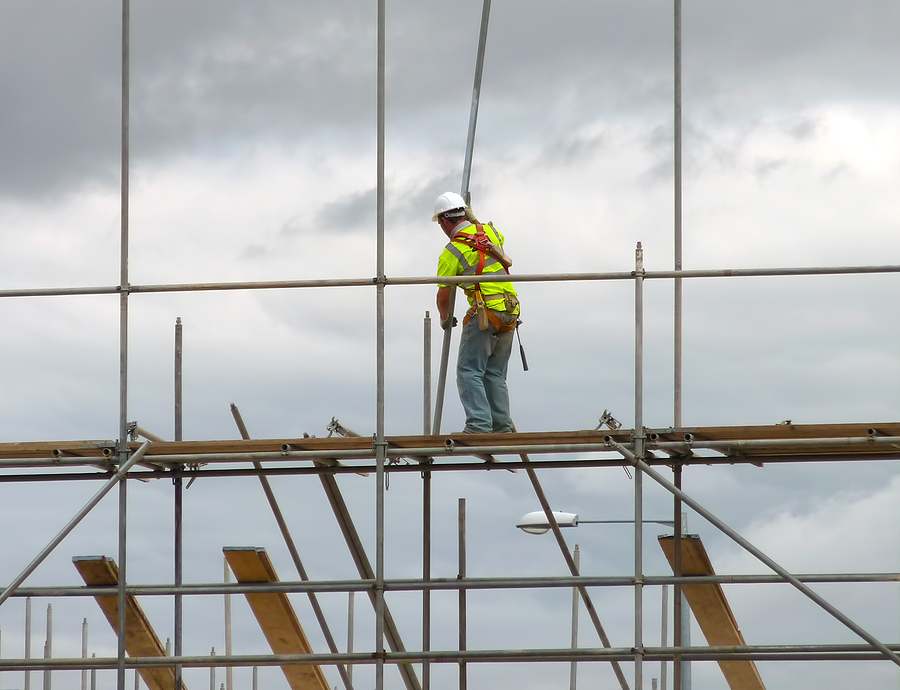How to Maintain New Mexico Construction Site Safety from Accidental Falls

Construction sites can be troublesome, especially considering the risks involved in working at elevated levels. This is because fatalities and injuries in the construction industry are generally caused by falls most of the time. Nonetheless, with adequate safety strategies, equipment, and training, some of such accidents can be minimized.
This article outlines how fall hazards in construction activities in New Mexico can be effectively managed. Such measures will go a long way in enhancing safety at the workplace and ensuring such unfortunate events are avoided.
Wear Fall Protection Equipment
The worker operatives who are working 6 feet above from the ground level must put on a full body harness which is mandated by OSHA. Safeguarding the worker with the appropriate equipment uses a lanyard, deceleration device or lifeline that ties the harness to the construction in such a way as to ensure that even if the worker falls, it limits his vertical drop to a safe distance.
It is important to wear the most appropriate size wickers and adjust the fitting when choosing a harness. The position of the D-ring at the back must be right, the chest strap and leg strap must neither be too loose nor too tight, and the shoulder straps must not sag. This will make adjusting the harness worth the effort since it prevents slippage of the device, allowing full motion freedom of the body while working.
Workers are required, on the occasions, to perform inspection of their personal fall arrest systems to ensure that its key parts or components are in sound state. Examine the system and report signs such as fraying, defective stitching, distorted ribs or buckles, broken D-rings etc. Equipment that is or has become unserviceable or degraded in excess should be done away with immediately.
Install Guardrails and Lifelines
In addition to personal fall arrest systems, guardrails, and lifelines provide added protection at height. Guardrails act as barriers to prevent workers from falling off the edge of rooftops, platforms, and other elevated surfaces. Lifelines allow a worker to move vertically while suspended, preventing impact if they slip and fall.
Consult OSHA’s Fall Protection in Construction guide to learn the proper set-up of these systems for different work environments. For example, criteria for the height, strength, and placement of guardrail components. Or determining optimal lifeline angle and methods for reducing swing falls.
Cover Holes and Openings
Unprotected holes and openings are tripping hazards and falling risks. All holes should be securely covered or surrounded by guardrail systems. Covers must be able to support at least twice the weight of workers and materials that may be on them. Marking openings clearly and ensuring proper lighting can further reduce hazards.
Training and Planning
Falls do not occur by coincidence. They are issues that can be worked on through training and planning. All hazard workers must receive training regularly about fall hazards, fall protection devices, and policies of the company, which may include the use of fall protection equipment.
However, supervisors at job sites have the responsibility to plan the jobs, such that fall exposures are reduced as far as possible.
For task management, pre-task safety meeting is an advantage as it helps the crew to assess and evaluate any foreseeable risks and plan for adequate precautions to meet the risk before work execution at the heights.
And that no worker should commence the task by themselves or improvise ways of protecting themselves from the fall. The application of “time out” enables people to think through the task and consider the safest way of doing it rather than the unsafe and hasty means.
Conclusion
There is no doubt that a properly coordinated fall protection program will enhance occupational safety in the New Mexico construction sites. Fall arrest systems should be worn and checked by workers, guardrails and lifelines must be utilized and holes and openings should be guarded against.
It is possible to avert falls, as long as there is a strategic structure or training in place. Companies and workers bear the onus of making sure that safety comes first.
